On January 1st 2020, the EU Commission’s research funding body European Research Council (ERC) gets a new President: the Italian nanotechnologist Mauro Ferrari, who almost cured cancer with nanoparticles during his past research in Texas, at MD Anderson Cancer Center and the neighbouring Houston Methodist Research Institute. Professor Ferrari had some interesting partners there, and now the question arises: will that have influenced Ferrari’s views on research integrity and research misconduct? And what about Ferrari’s past endorsement of Italian regenerative medicine quacks of Stamina? Will this appointment make things even worse than they were before under the previous ERC president, the CNRS bureaucrat Jean-Pierre Bourguignon?
ERC has previously awarded million-euro heave research grants to some rather questionable recipients, in some cases ERC was or should have been aware of scientific controversies, PubPeer evidence, or even research misconduct findings. I summarized several such cases in this article. In fact, even when peer reviewers try to warn ERC about shady grant applicants, it falls onto deaf bureaucrats’ ears.
- Update 8.04.2020. Ferrari resigned as ERC president on 7 April. Read details at the end.
Unlike other research funders, ERC never terminated a running grant, unless the cheater ended up permanently without a research lab, for one reason or another: Pontus Bostöm was sacked and unsackable Susana Gonzalez was given clerk duties. In the cases of Olivier Voinnet and Maria Fousteri, ERC even ignored an official notification of research misconduct and continued paying out the grants till the very end as if nothing has happened. Presently several ongoing research grants in life sciences seem to be in need of an ERC intervention, for example the cases of Carlos Lopez-Otin and Janine Erler.
In this regard, maybe ERC should at some point educate the European science community how Ferrari’s long-term association with such questionable characters as the MD Anderson oncologists Anil Sood and Gabriel Lopez-Beerestein is to be understood. Anil Sood’s PubPeer record is presently 48 papers long, it largely overlaps with that of Lopez-Beerestein (28 papers), and these works of cancer research contain all kinds of data manipulations.
You can read what kind of cancer researcher from hell Anil Sood in my previous report here. That and an earlier article cover the general hair-raising attitude to research integrity at MD Anderson: even the Research Integrity Officer William Plunkett is part of the problem at this cancerous institution in Texas. They simply don’t investigate research misconduct there, and the more grant money a researcher brings in, the more disinterested MD Anderson becomes in how that money what obtained, and only acts by retaliating against whistleblowers.
Sood had to issue some corrections but he might never have to face a retraction, i.e. as long as MD Anderson keeps supporting him. Which presumably for ERC means Sood is a partner for whom Ferrari should not be in any way ashamed of?
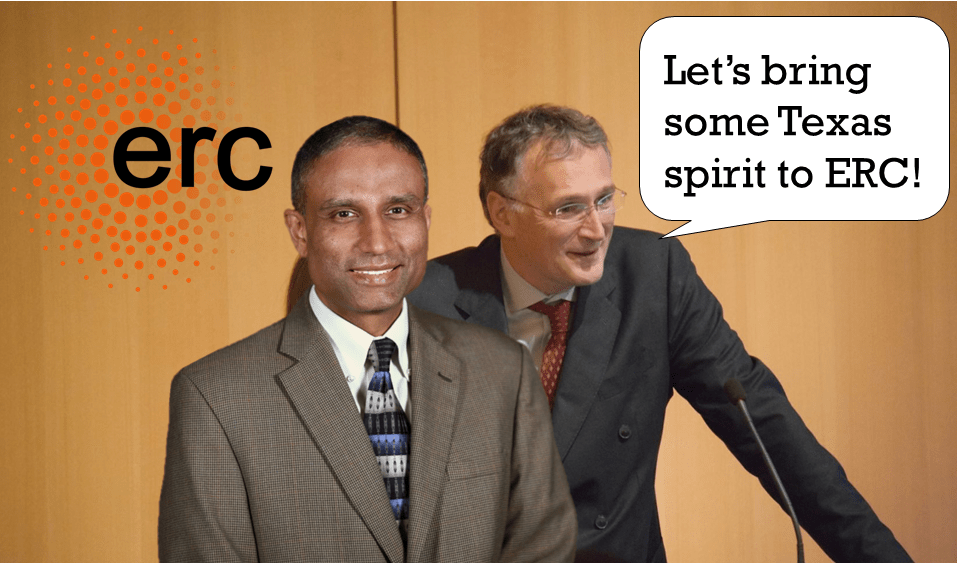
From Wikipedia, we learn that Ferrari probably knew Sood at least since 2004, when the former joined MD Anderson as chair of the department of nanomedicine and biomedical engineering. When it 2010 Ferrari became president and CEO of the neighbouring Houston Methodist Research Institute, his association with Sood certainly did not end. Quite the opposite: Ferrari and Sood were given by NIH $16 million to cure cancer with nanoparticles. In April 2010, MD Anderson issued this press release:
National Cancer Institute funds center of excellence to take on pancreatic, ovarian cancers
A $16-million, five-year grant by the National Cancer Institute’s nanomedicine initiative blends the expertise of five research institutions to focus an array of innovative nanotechnologies on improving the outcome of patients with ovarian or pancreatic cancers.
The Texas Center for Cancer Nanomedicine, an NCI Center for Nanotechnology Excellence funded by the grant assembles researchers from The University of Texas MD Anderson Cancer Center, The University of Texas Health Science Center at Houston (UTHealth), The Methodist Hospital Research Institute, Rice University and Albert Einstein College of Medicine In New York. […]
“We believe our team of internationally recognized scientists will push the boundaries of cancer therapy and diagnosis, starting with two cancers that are among the hardest to detect and the most difficult to treat,” said Anil Sood, M.D., professor in MD Anderson’s departments of Gynecologic Oncology and Cancer Biology, one of four principal investigators.
Sood, David Gorenstein, Ph.D., deputy director of The Brown Foundation Institute of Molecular Medicine for the Prevention of Human Diseases at UTHealth, Gabriel Lopez-Berestein, M.D., professor of Experimental Therapeutics at MD Anderson, and Mauro Ferrari, Ph.D., president and CEO of The Methodist Hospital Research Institute, are co-principal investigators of the center.
Ovarian cancer is the fourth-leading cause of cancer death among women. The NCI estimates 13,850 will die of the disease in 2010. Pancreatic cancer is the fifth-leading cause of cancer death, with 36,800 expected fatalities this year. There is no early detection strategy for either disease.
“Our understanding of the natural and physical barriers that impede development of drugs guides the advancement of our nanomedicine approaches for the prevention and personalized treatment of cancer,” said Lopez-Berestein, who pioneered the field of nanomedicine in 1995 with a version of the antifungal drug amphotericin B encapsulated in a liposomal nanoparticle.
“This is a triumph of the multi-institutional collaborations fostered and developed over several years with the Alliance for NanoHealth in Houston,” said Ferrari, who is president of the alliance of Houston-area research institutions. “It’s the fifth large center we’ve been able to fund in the last four years. This unparalleled success speaks volumes about the primacy of Houston-area institutions in both cancer and nanotechnology, and our ability to work together.”
In addition to being accomplished developers of nanoparticles, the team also has expertise in research about and treatment of pancreatic and ovarian cancers, drug development, moving ideas from the lab to clinical trials (translational research), as well as entrepreneurial experience forming local spin-off companies and working with existing pharmaceutical and biotech companies to broadly distribute new therapies.
Center researchers have an extensive record of collaboration among themselves and strong connections to other nanotechnology experts. […]
The NIH grant records are listed here:
“As a Principal Investigator of the proposed TCCN, Dr. Mauro Ferrari is Chairman of the Department of Nanomedicine and Biomedical Engineering (nBME). Dr. Ferrari holds concurrent faculty appointments at MDACC (tenured Full Professor, Experimental Therapeutics), Rice University (Bioengineering) and UT Austin (Biomedical Engineering), and is the President of the Alliance for NanoHealth (ANH). Dr. Ferrari is trained in mathematics, mechanical engineering and medicine. He is a recognized leader in the development and applicafion of biomedical nanotechnology. Among many awards he received. Dr. Ferrari is the recipient of the DoD CDMRP Breast Cancer Research Program’s Innovator Award in 2008. Co-leading the TCCN as Principal Invesfigator is Dr. Anil K. Sood of MDACC, Professor and Director ofthe Blanton-Davis Ovarian Cancer Research Program in the Departments of Gynecologic Oncology and Cancer Biology. He is also the Director of the Center for RNA Interference and Non-Coding RNA at MDACC. Dr. Sood is a renowned physician scienfist known for his research on the systemic in vivo siRNA delivery using biocompafible nanoparticles and development of novel anti-vascular therapeufic approaches. Dr. Gabriel Lopez-Berestein Is the third Principal Investigator, and is currently Professor of Medicine and Cancer Biology, Department of Experimental Therapeutics, Division of Cancer Medicine, MDACC;Executive Director, PDC at MDACC and Adjunct Professor at Rice University (Bioengineering). Dr. Lopez-Berestein is a widely recognized expert in the field of liposomal therapeufics and in translafional research. TCCN Administrative Core will be advised by Dr. Raymond DuBois, Other Significant Contributor of TCCN and Provost/Executive Vice President of MDACC. Drs. Ferrari, Sood, and Lopez-Berestein will lead the TCCN from the perspecfives of applied nanotechnology, clinical oncology, and translational work for pharmaceutical development, respectively.”
In 2018, incidentally soon after that grant programme ended, with Ferrari, Sood and Lopez-Beerestein successfully paving the way to curing cancer with nanotechnology, Ferrari stepped down as President and CEO of Houston Methodist and accepted a most modest job of Chief Commercialization Officer, and retired in 2019. To become ERC president.
So far, of the entire Sood-Ferrari collaboration, only one of their 5 common papers was flagged on PubPeer for a duplicated figure.
C Rodriguez-Aguayo, […] Mauro Ferrari , […] Anil K. Sood , Gabriel Lopez-Berestein
PTGER3 induces ovary tumorigenesis and confers resistance to cisplatin therapy through up-regulation Ras-MAPK/Erk-ETS1-ELK1/CFTR1 axis
EBioMedicine (2019) doi: 10.1016/j.ebiom.2018.11.045
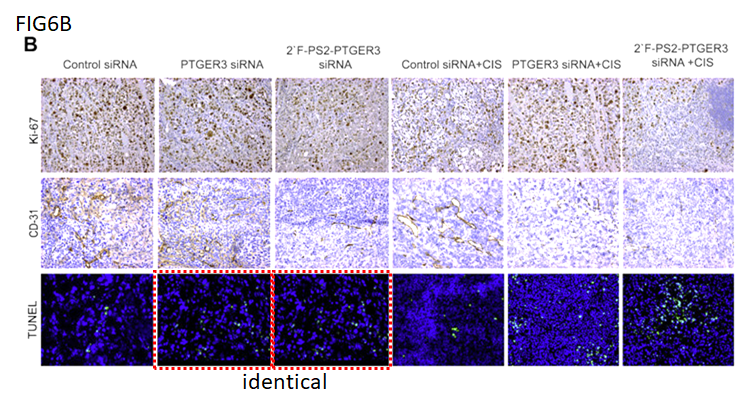
A minor issue of oversight you might think, but such image duplications are common enough in Sood papers to warrant the suspicion that they were actually very much intentional. See these rather recently posted PubPeer examples here, here, and here:
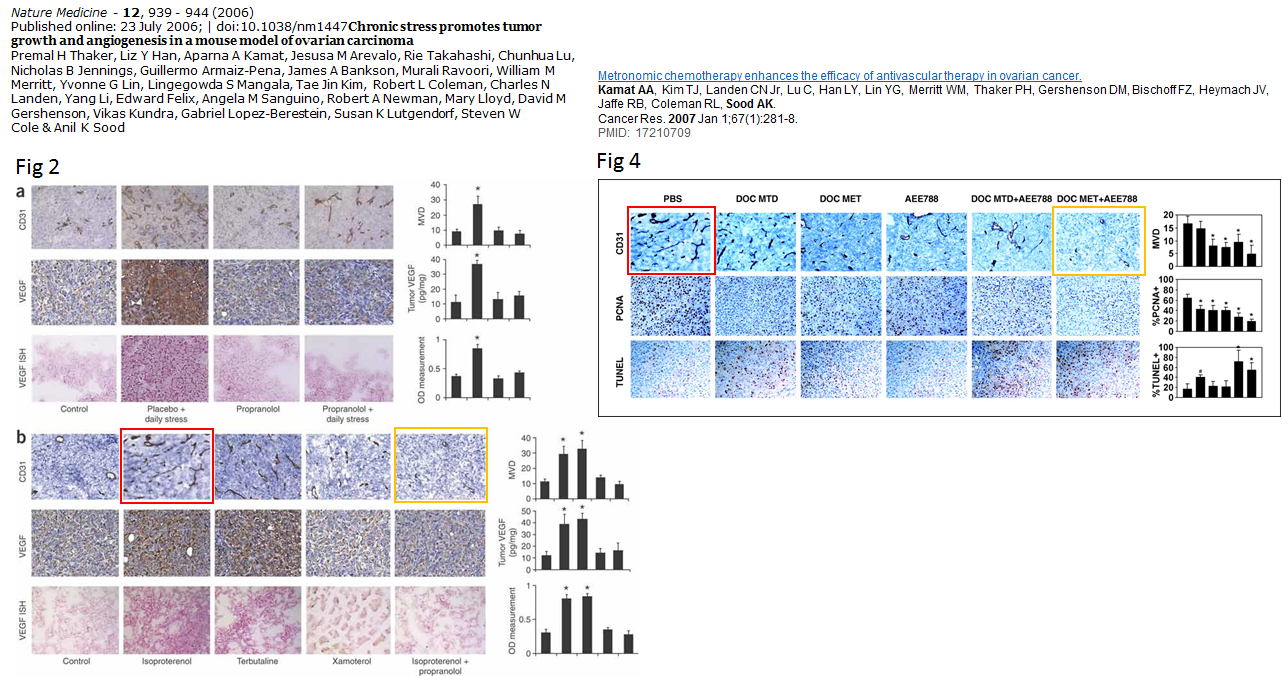
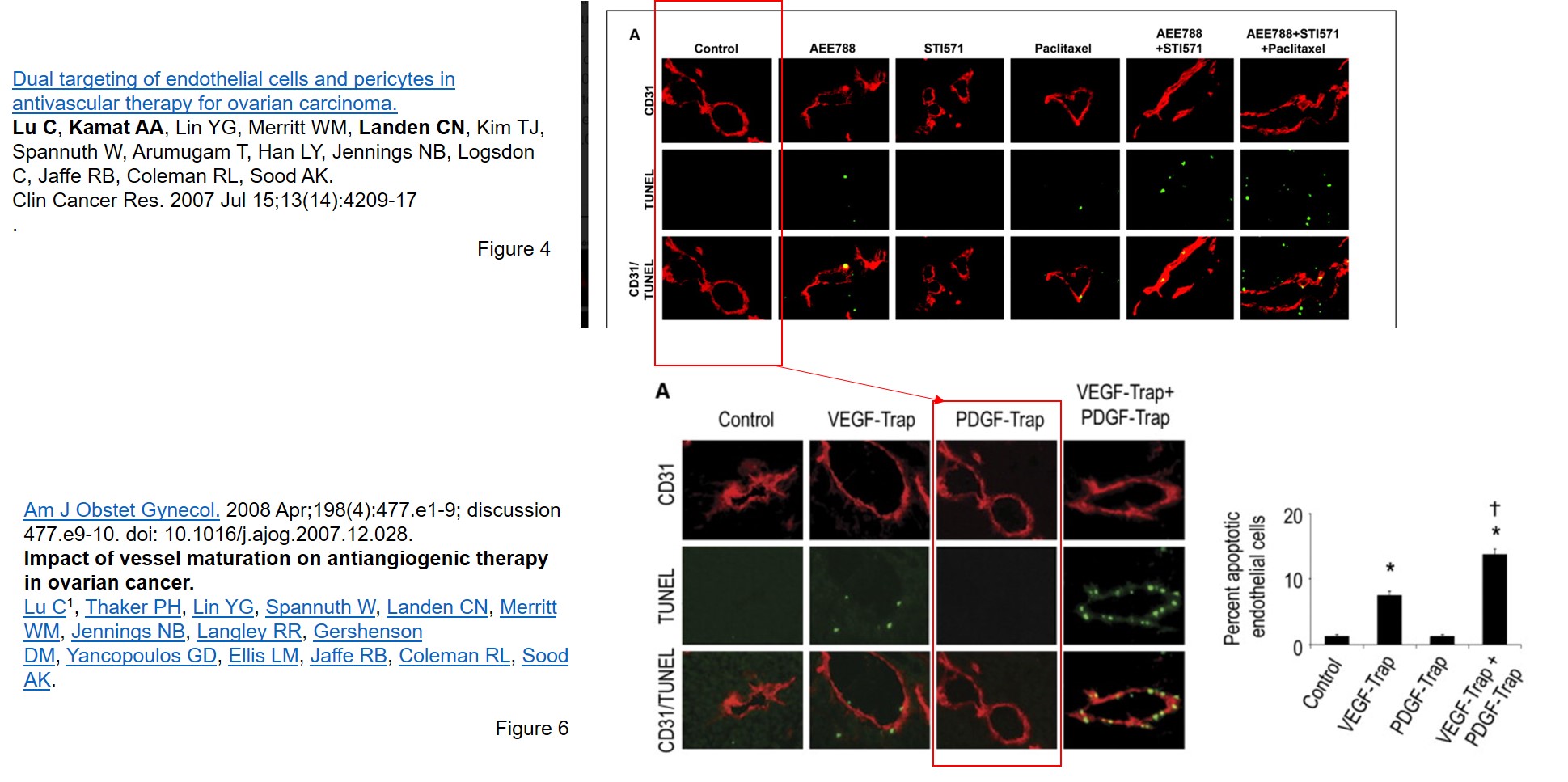
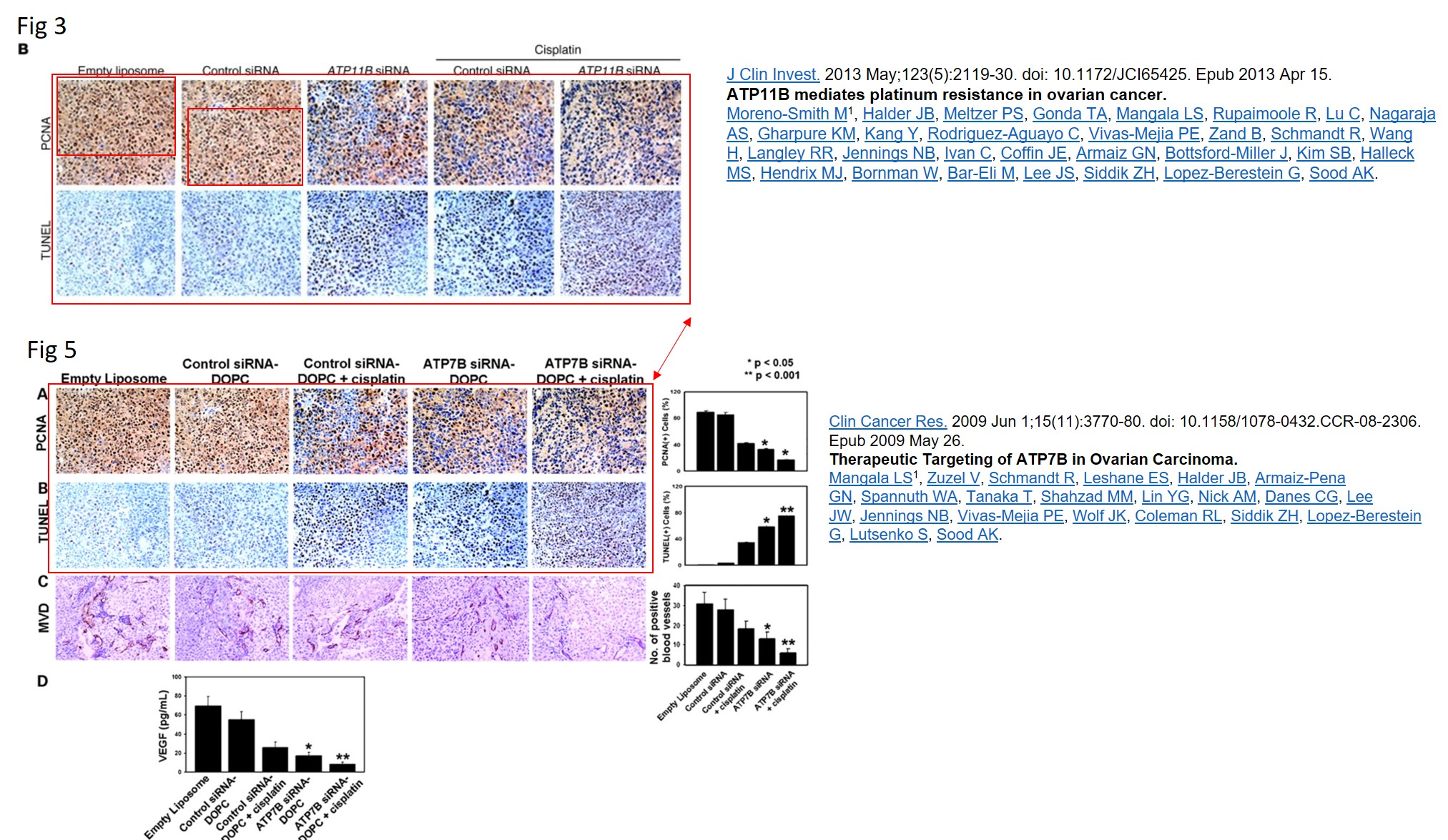
Lopez-Berestein has 29 papers listed on PubPeer, most but not all of them with Sood as coauthor. The former has published for example this, without Sood but with his first author and blame-taker being none other than Ariel Fernandez, formerly a dishonest biophysicist, now a full-time looney with an unhealthy penchant for blaming Retraction Watch and inventing female alter egos to defend his honour (read more at Smut Clyde’s own blog).

The 5 papers published by Ferrari with Sood contain many bar diagrams, and you can read here how Sood does his quantifications. Then decide how trustworthy these research works are. The following publication was very much celebrated in 2010, right after the Texas Center for Cancer Nanomedicine was founded. Here, cancer cells were successfully eliminated by Sood using siRNA-carrying nanoparticles made by Ferrari:
Tanaka T […] Lopez-Berestein G, Sood AK, Ferrari M.
Sustained small interfering RNA delivery by mesoporous silicon particles.
Cancer Res. 2010 doi: 10.1158/0008-5472.CAN-09-3931.
As it was announced in this UT Houston press release:
“The multistage delivery system is revolutionary in that it allows the therapeutic payloads to cross the biological barriers in the body and reach their target. It further helps release agents over long periods of time directly into the bloodstream, which is unprecedented,” said Mauro Ferrari, Ph.D., chairman of the Department of NanoMedicine and Biomedical Engineering at The University of Texas Medical School at Houston, which is part of UTHealth. “We are very excited about the results of this paper, since it provides the first validation of the therapeutic advantages of the multistage delivery system in animal models of cancer.”
The target of the nanopackaged siRNA was the epithelial cell receptor protein–tyrosine kinase EphA2, which is overexpressed in many cancers. This is how the authors assessed it, a graduate student would have been sent back to the lab for that western blot figure which nevertheless passed peer review at Cancer Research:
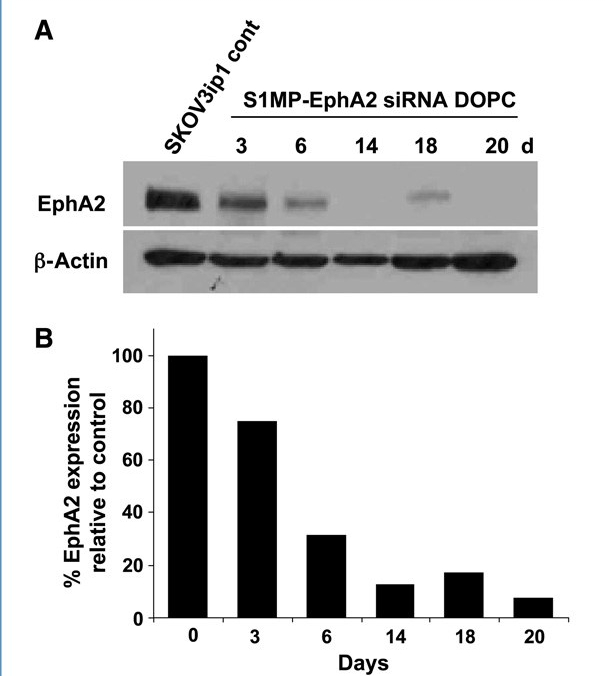
The EphA2 bands most obviously do not match those of the loading control beta-Actin, if you compare their width and distance to each other. Meaning, we are not looking at the same gel probed with two different antibodies, as Sood and the ERC President want us to believe. The loading control comes from a different gel (read more about loading controls here and here), moreover, given the absence of error bars, that was one single gel analysis, and yet the authors used it to quantify relative EphA2 expression.
A similar kind of figure was published 3 years later when siRNA was packaged into a different kind of nanoparticles, the first author and Ferrari’s partner at Houston Methodist, Haifa Shen, even spoke of saving lives of cancer patients. Once again the loading control came from another gel, and you just have to trust Sood and Lopez-Berestein to not have cheated when loading their samples for EphA2 analysis. That experiment was apparently repeated as error bars indicate, but did the authors also normalise for equal loading?
Shen H, […] Sood AK, Ferrari M, Lopez-Berestein G.
Enhancing chemotherapy response with sustained EphA2 silencing using multistage vector delivery.
Clin Cancer Res. (2013) doi: 10.1158/1078-0432.CCR-12-2764.
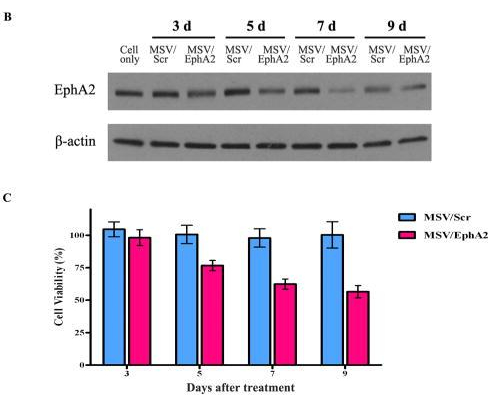
In another media article, Ferrari said this about his 2010 discovery with Sood and Lopez-Berestein:
“It will change medicine completely.”
Almost a decade has passed since, and the medicine is still not changed by nanoparticle-based drug delivery, neither completely nor in part. It might never happen. What did happen, was that Sood’ and Lopez-Berestein’s associate Ferrari is now in charge of ERC. Which direction on research integrity will ERC take now? In other words, will ERC’s funding policy now be Soodomized?

Update: As pointed out by Sylvie Coyaud, Ferrari brings even more controversy. In 2014, he openly endorsed the quackery of the psychologist (now a debarred criminal with prison term) Davide Vannoni and his company Stamina, who used to peddle pseudoscientific bone marrow “stem cell” therapies on television. The experiments to cure all possible neurodegenrative diseases with a magic stem cell cocktail patented by Vannoni eventually received an approval from the Italian Senate and funding support of €3 million in 2013. Back then, Ferrari described Stamina on television as
“the first important case for regenerative medicine here in Italy, an opportunity for our country to take an extraordinary role of leadership”.
You can watch the video here (starting from 3’32). Thus unbiased, the nanotechnologist from Houston Methodist was even appointed chairman of the governmental commission tasked with evaluating Vannoni’s idiotic Stamina quackery, as Nature reported. Maybe the association with Sood helped Ferrari understand Vannoni’s mind? In any case, only the mass protests of Italian stem cell researchers prevented the state-sanctioned patient abuse. But now Ferrari will preside over their ERC grants.
Update 8.04.2020
Ferrari resigned on 7 April 2020 as ERC president, officially over COVID-19 policies. In reality, he was asked to resign. I learned Ferrari was offered an exit into a comfortable job as EU Commission’s special envoy on COVID-19 (reminiscent of the former head of DG Research and Innovation Robert-Jan Smits), but Ferrari chose high drama instead. He is presently in USA, where he used to spend most time anyway, but now in COVID-19 lockdown. Financial Times published Ferrari’s full resignation letter, here excerpts:
“I thought that at a time like this, the very best scientists in the world should be provided with resources and opportunities to fight the pandemic, with new drugs, new vaccines, new diagnostic tools, new behavioral dynamic approaches based on science, to replace the oft-improvised intuitions of political leaders.
The proposal was rejected unanimously by the governing body of the ERC, without even considering what shape or form it may take, and to such an extent that my presidency became fully opposed by them, in every respect. The rejection of my motion was based on the notion that the ERC funds “Bottom-Up” research..[…]
Now it is time for me to return to the frontier, to the frontlines of the fight against Covid-19, with real resources and responsibilities, away from offices in Brussels, where my political skills are clearly inadequate, and again at the true service of those who need new medical solutions.“
Maybe Ferrari wanted to flood the biggest science bigwigs (i.e., the European counterparts of Anil Sood) with millions of cash, hoping for a magic COVID-19 cure? I requested this proposal and will update. Today, ERC issued this statement:
“On Friday 27 March, all 19 active members of the ERC’s Scientific Council individually and unanimously requested that Mauro Ferrari resign from his position as ERC’s President.
This request was made for four reasons:
- During his three-month term in office, Professor Ferrari displayed a complete lack of appreciation for the raison-d’être of the ERC to support excellent frontier science, designed and implemented by the best researchers in Europe. Although voicing his support for this in public pronouncements, the proposals he made to the Scientific Council did not reflect this position. He did not understand the context of the ERC within the EU’s Research and Innovation Programme Horizon 2020.
- Since his appointment, Professor Ferrari displayed a lack of engagement with the ERC, failing to participate in many important meetings, spending extensive time in the USA and failing to defend the ERC’s programme and mission when representing the ERC.
- In contrast, Professor Ferrari made several personal initiatives within the Commission, without consulting or tapping into the collective knowledge of the Scientific Council, and instead using his position to promote his own ideas.
- Lastly, Professor Ferrari was involved in multiple external enterprises, some academic and some commercial, which took a lot of his time and effort and appeared on several occasions to take precedence over his commitment to ERC. The workload associated with these activities proved to be incompatible with the mandate of President of the Scientific Council.”

Donate!
If you are interested to support my work, you can leave here a small tip of $5. Or several of small tips, just increase the amount as you like (2x=€10; 5x=€25). Your generous patronage of my journalism will be most appreciated!
€5.00


Lovely…all in family!
LikeLike
Clin Cancer Res. 2006 Aug 15;12(16):4916-24.
Focal adhesion kinase targeting using in vivo short interfering RNA delivery in neutral liposomes for ovarian carcinoma therapy.
Halder J1, Kamat AA, Landen CN Jr, Han LY, Lutgendorf SK, Lin YG, Merritt WM, Jennings NB, Chavez-Reyes A, Coleman RL, Gershenson DM, Schmandt R, Cole SW, Lopez-Berestein G, Sood AK.
Author information
1
Department of Gynecologic Oncology, University of Texas M.D. Anderson Cancer Center, Houston, Texas, USA.
Pubpeer comments: https://pubpeer.com/publications/13AD3D935ECFC75AFE987A45B23357
2019 correction.
http://clincancerres.aacrjournals.org/content/25/10/3194
“In the original version of this article (1), Fig. 4B included an incorrect IHC panel for CD31 with FAK siRNA + docetaxel. The error has been corrected in the latest online PDF version of the article. The authors regret this error.”
LikeLike
It’s very dangerous and even potentially damaging to FBS if there is too much guilt by association. As we have discussed before. Fraudsters of the caliber of Sood are clearly socio/psychopath or with another cluster B personality disorder. Thus they are not only extremely manipulative, they are also ‘charming’ with ‘strong charisma’ and can fool and play almost any other human being. Now the fact Sood had played the new ERC president does not unless there is concrete evidence demonstrate that the new president is also a fraudster. On the contrary it may just show he is….a normal human.
Maybe there is a problem but we need to see something direct on the ERC president.
Until then I am not buying the narrative that he should bring a ‘certain culture’ with him to the ERC.
LikeLike
Let us first hear from Prof Ferrari, EU Commission and ERC if they share your negative views on Prof Anil Sood!
LikeLike
“Maybe there is a problem but we need to see something direct on the ERC president.”.
Sustained small interfering RNA delivery by mesoporous silicon particles.
Cancer Res. 2010 doi: 10.1158/0008-5472.CAN-09-3931.
does have Mauro Ferrari as senior and corresponding author.
http://cancerres.aacrjournals.org/content/70/9/3687.article-info
Figure 2 Cancer Res. 2010 May 1; 70(9): 3687–3696.
“The EphA2 bands most obviously do not match those of the loading control beta-Actin, if you compare their width and distance to each other. Meaning, we are not looking at the same gel probed with two different antibodies, as Sood and the ERC President want us to believe. The loading control comes from a different gel (read more about loading controls here and here), moreover, given the absence of error bars, that was one single gel analysis, and yet the authors used it to quantify relative EphA2 expression.”
Does seem to be a genuine scientific concern. The authors could post the full blots used to create figure 2 Cancer Res. 2010 May 1; 70(9): 3687–3696.
LikeLike
Pingback: Gradito al regime - Ocasapiens - Blog - Repubblica.it
Pingback: When gel bands go marching in, by Elisabeth Bik – For Better Science
There are some very interesting things behind the title downgrade of Dr. Ferrari at H. Methodist and his subsequent “retirement.” Having to do with shenanigans on a different megaproject. Enormous amount of mismanagement and waste from what I’m told. Caused the departure of a chief operations officer as well (Tong Sun). Remarkable that no local journalists seem to be on top of this like they have been MD Anderson lately. There’s a lot underneath the surface, and I imagine H. Methodist is breathing a sigh of relief that it was handled so discreetly. Wish I could say more, but if someone were to do a little digging, there’s a story here.
LikeLike
Pingback: Academic throne succession: from Anne Dejean to Oliver Bischof – For Better Science
Pingback: Good riddance, bon débarras y buen viaje - Ocasapiens - Blog - Repubblica.it
Resignation date seems to be an error, as posted 7 April 2002, should read 7 April 2020?
LikeLike
Thanks, fixed!
LikeLike
his first author and blame-taker being none other than Ariel Fernandez, formerly a dishonest biophysicist, now a full-time looney with an unhealthy penchant for blaming Retraction Watch and inventing female alter egos to defend his honour
Fernandez’ attempts to rewrite his Wikipedia entry through a succession of unconvincing sockpuppets are still going on, with three archived pages as well as the current Talk page: https://en.wikipedia.org/wiki/Talk:Ariel_Fernandez
LikeLike
Pingback: Bullshitter Mauro Ferrari out as ERC President – For Better Science